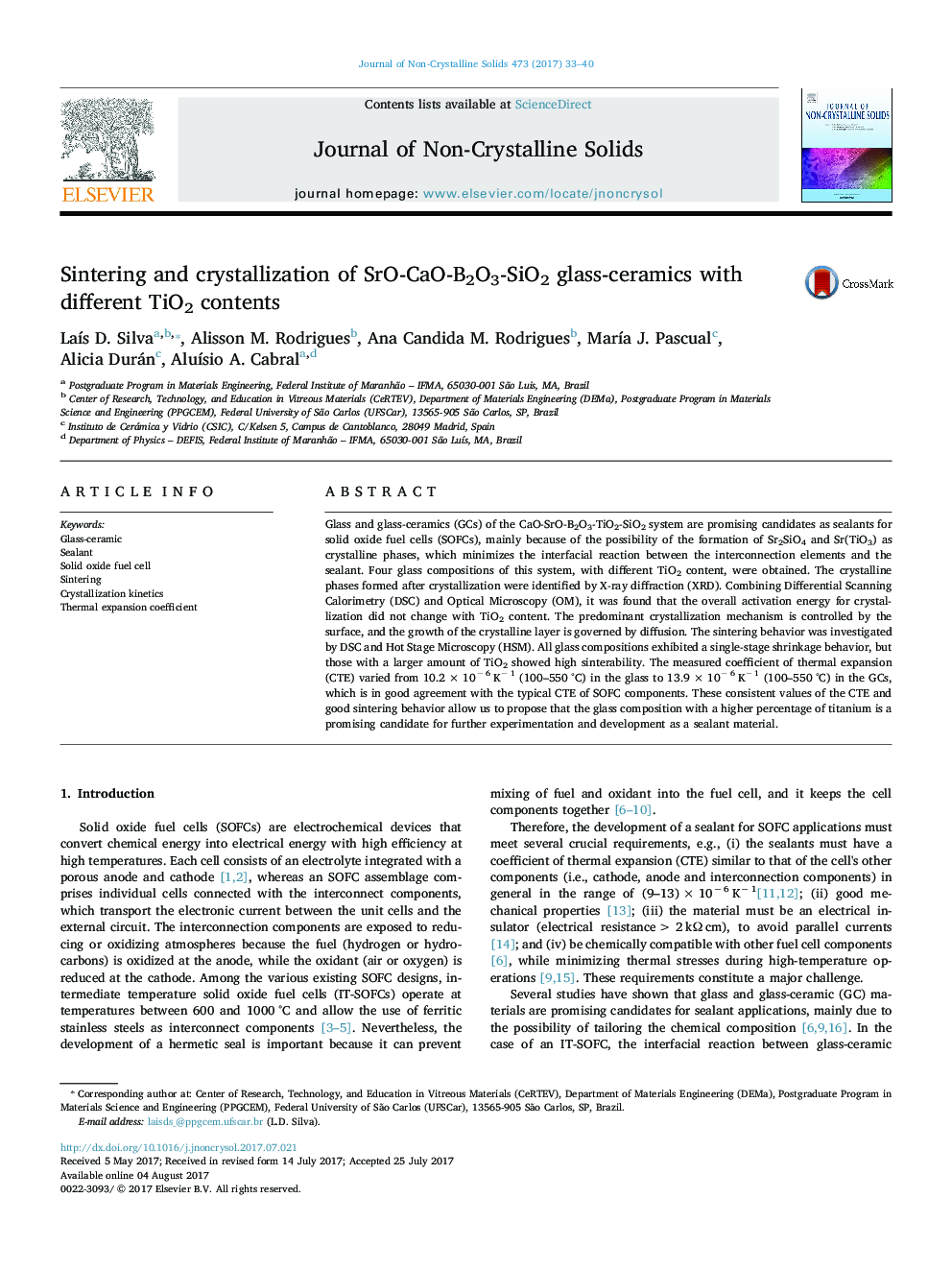| Article ID | Journal | Published Year | Pages | File Type |
|---|---|---|---|---|
| 5441146 | Journal of Non-Crystalline Solids | 2017 | 8 Pages |
Abstract
Glass and glass-ceramics (GCs) of the CaO-SrO-B2O3-TiO2-SiO2 system are promising candidates as sealants for solid oxide fuel cells (SOFCs), mainly because of the possibility of the formation of Sr2SiO4 and Sr(TiO3) as crystalline phases, which minimizes the interfacial reaction between the interconnection elements and the sealant. Four glass compositions of this system, with different TiO2 content, were obtained. The crystalline phases formed after crystallization were identified by X-ray diffraction (XRD). Combining Differential Scanning Calorimetry (DSC) and Optical Microscopy (OM), it was found that the overall activation energy for crystallization did not change with TiO2 content. The predominant crystallization mechanism is controlled by the surface, and the growth of the crystalline layer is governed by diffusion. The sintering behavior was investigated by DSC and Hot Stage Microscopy (HSM). All glass compositions exhibited a single-stage shrinkage behavior, but those with a larger amount of TiO2 showed high sinterability. The measured coefficient of thermal expansion (CTE) varied from 10.2 Ã 10â 6 Kâ 1 (100-550 °C) in the glass to 13.9 Ã 10â 6 Kâ 1 (100-550 °C) in the GCs, which is in good agreement with the typical CTE of SOFC components. These consistent values of the CTE and good sintering behavior allow us to propose that the glass composition with a higher percentage of titanium is a promising candidate for further experimentation and development as a sealant material.
Keywords
Related Topics
Physical Sciences and Engineering
Materials Science
Ceramics and Composites
Authors
LaÃs D. Silva, Alisson M. Rodrigues, Ana Candida M. Rodrigues, MarÃa J. Pascual, Alicia Durán, AluÃsio A. Cabral,
